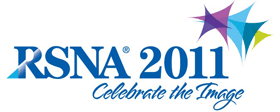
Abstract Archives of the RSNA, 2011
LL-MKS-TU3B
Ulnar Neuropathy: Reliability of 3 T MR Neurography
Scientific Informal (Poster) Presentations
Presented on November 29, 2011
Presented as part of LL-MKS-TU: Musculoskeletal Imaging
Majid Chalian MD, Presenter: Nothing to Disclose
Neda Faridian-Aragh MD, Abstract Co-Author: Nothing to Disclose
Theodoros Soldatos MD,PHD, Abstract Co-Author: Nothing to Disclose
John Eng MD, Abstract Co-Author: Nothing to Disclose
John A. Carrino MD, MPH, Abstract Co-Author: Research grant, Siemens AG
Research grant, Carestream Health, Inc
Research Consultant, General Electric Company
Avneesh Chhabra MD, Abstract Co-Author: Research grant, Siemens AG
Research Consultant, Siemens AG
Research grant, Integra LifeSciences Holdings Corporation
Research grant, General Electric Company
To evaluate the inter-observer reliability of qualitative features of the ulnar neuropathy at 3T (Tesla) magnetic resonance neurography (MRN).
MRN examinations of ulnar nerve (UN) performed over a period of one year were reviewed by three blinded independent musculoskeletal radiologists according to predefined criteria. A total of 56 examinations were included from which four were excluded due to motion artifacts. The following findings were assessed: UN signal intensity (SI), size, course, fascicular morphology, and regional skeletal muscles edema, fatty replacement, and atrophy. Pairwise and overall inter-observer values (weighted κ Statistics) and 95% confidence intervals (CI) were calculated by using the bootstrap technique with 10,000 samples.
There was very good inter-observer agreement regarding UN size [κ=0.87 (0.65 to 1.00)]; good agreement regarding UN SI [κ=0.65 (0.55 to 0.75)], UN course [κ=0.62 (0.43 to 0.77)], and muscle atrophy [κ=0.77 (0.48 to 0.95)]; moderate agreement in reading UN fascicular morphology [κ=0.45 (0.32 to 0.59)], and muscle edema [κ=0.60 (0.44 to 0.73)]; and a fair agreement in associated muscle fatty infiltration [κ=0.23 (-0.04 to 0.47)]. At Wald testing, the distribution of the ratings was significantly different across readers for UN fascicular morphology (p=0.015) and not significantly different for UN signal (p=0.528), size (p=0.582), course (p=0.954), regional muscle edema (p=0.501), fatty infiltration (p=0.108), and atrophy (p=1.00) (Figure 1).
The interpretation of ulnar nerve MRN characteristics has sufficient reliability to warrant the testing of these features as potential diagnostic criteria.
MRN is being increasingly used for diagnosis of peripheral nerve lesions including ulnar neuropathy. Hence, it is crucial to evaluate its reliability to determine the reproducibility of the readings.
Chalian, M,
Faridian-Aragh, N,
Soldatos, T,
Eng, J,
Carrino, J,
Chhabra, A,
Ulnar Neuropathy: Reliability of 3 T MR Neurography. Radiological Society of North America 2011 Scientific Assembly and Annual Meeting, November 26 - December 2, 2011 ,Chicago IL.
http://archive.rsna.org/2011/11034540.html

